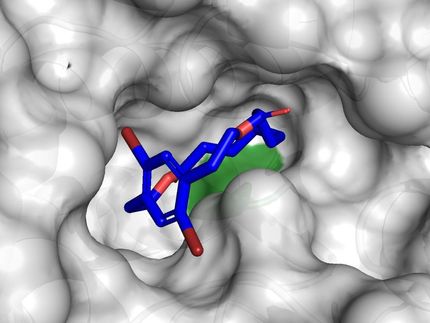Ringing the changes 'opens the road to new medicines'
Inspired by the classic 'ball-in-a-cup' children's toy, researchers at the University of York have discovered an innovative method to make medicinally important molecules.
The molecules contain atoms arranged in large rings, known as macrocycles, whose importance in medicine has been known for decades. But translating this knowledge into the development of new medical treatments is a major challenge because macrocycles are notoriously difficult to make.
Lead researcher, Dr Will Unsworth of the Department of Chemistry at York, explained: "The ball-in-a-cup is a simple, but surprisingly accurate analogy for a ring forming reaction. To produce a molecule containing a ring, the two ends of a molecule must collide with the right energy and trajectory to form a new chemical bond, just as the flight of the 'ball' must be judged perfectly if it is to land in the 'cup' without bouncing out, or missing entirely!
"Making macrocycles is like tackling the ball-in-a-cup with an extra-long string, which unsurprisingly raises its difficulty significantly.'"
Existing methods for making macrocycles seek to minimise the impact of this difficult process, but they are generally inadequate for their production on a commercially viable scale. The new approach developed by Dr Unsworth and his team allows macrocycles to be 'grown' from existing rings using ring enlargement reactions, while the difficult ring closing reaction that blights current methods is avoided entirely.
Dr Unsworth added: "Macrocycles have long been known to display unique medicinal properties, but a lack of effective and scalable methods to make them, means that they have historically been under-investigated. We hope that by simplifying their production through the techniques we have discovered will pave the way for the development of new classes of life-saving medicines."
Original publication
Most read news
Original publication
Christiana Kitsiou, Jordan J. Hindes, Phillip I'Anson, Paula Jackson, Thomas C. Wilson, Eleanor K. Daly, Hannah R. Felstead, Peter Hearnshaw, William P. Unsworth; "The Synthesis of Structurally Diverse Macrocycles By Successive Ring Expansion"; Angew. Chem. Int. Ed.; 2015
Organizations
Other news from the department science

Get the life science industry in your inbox
From now on, don't miss a thing: Our newsletter for biotechnology, pharma and life sciences brings you up to date every Tuesday and Thursday. The latest industry news, product highlights and innovations - compact and easy to understand in your inbox. Researched by us so you don't have to.

























































